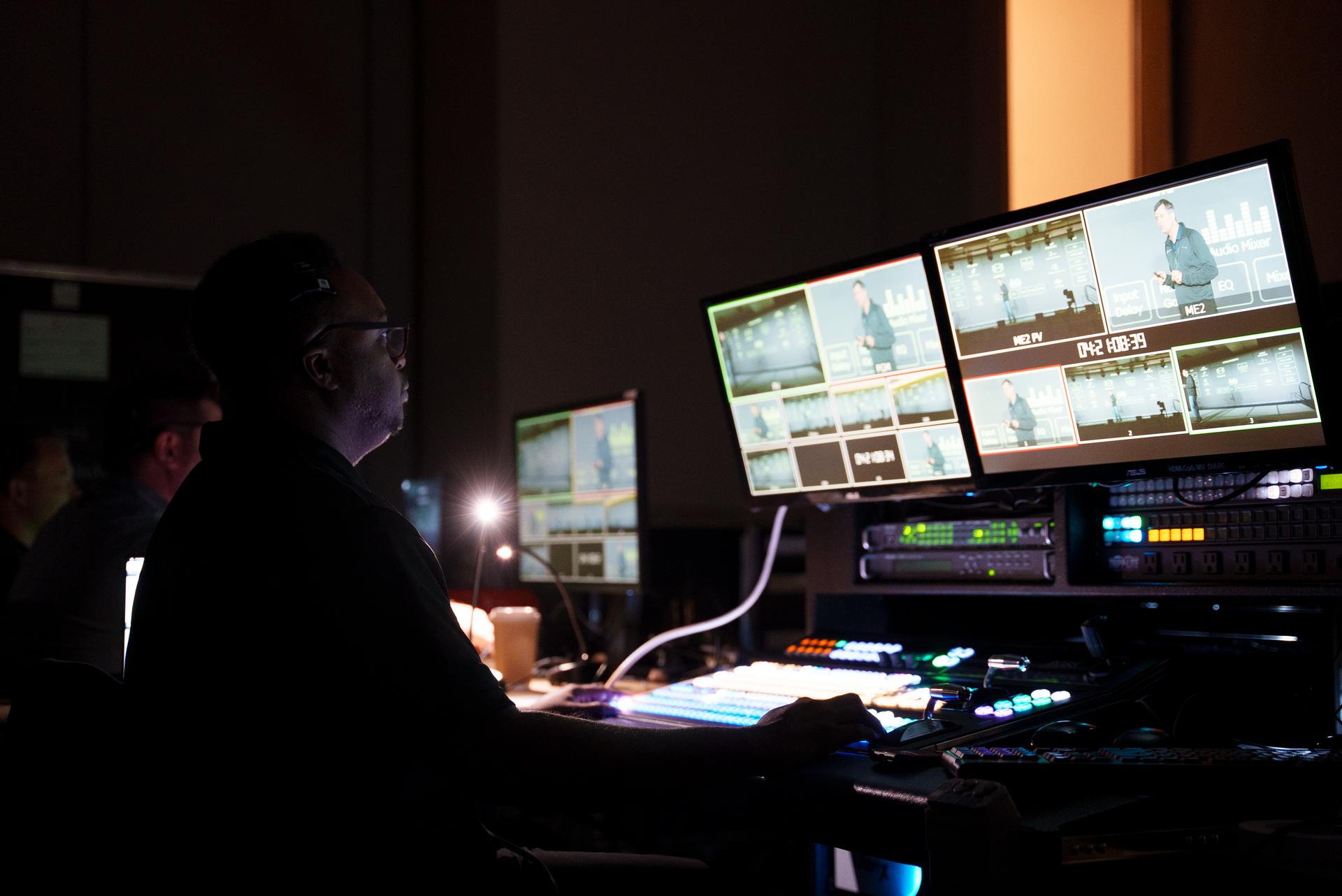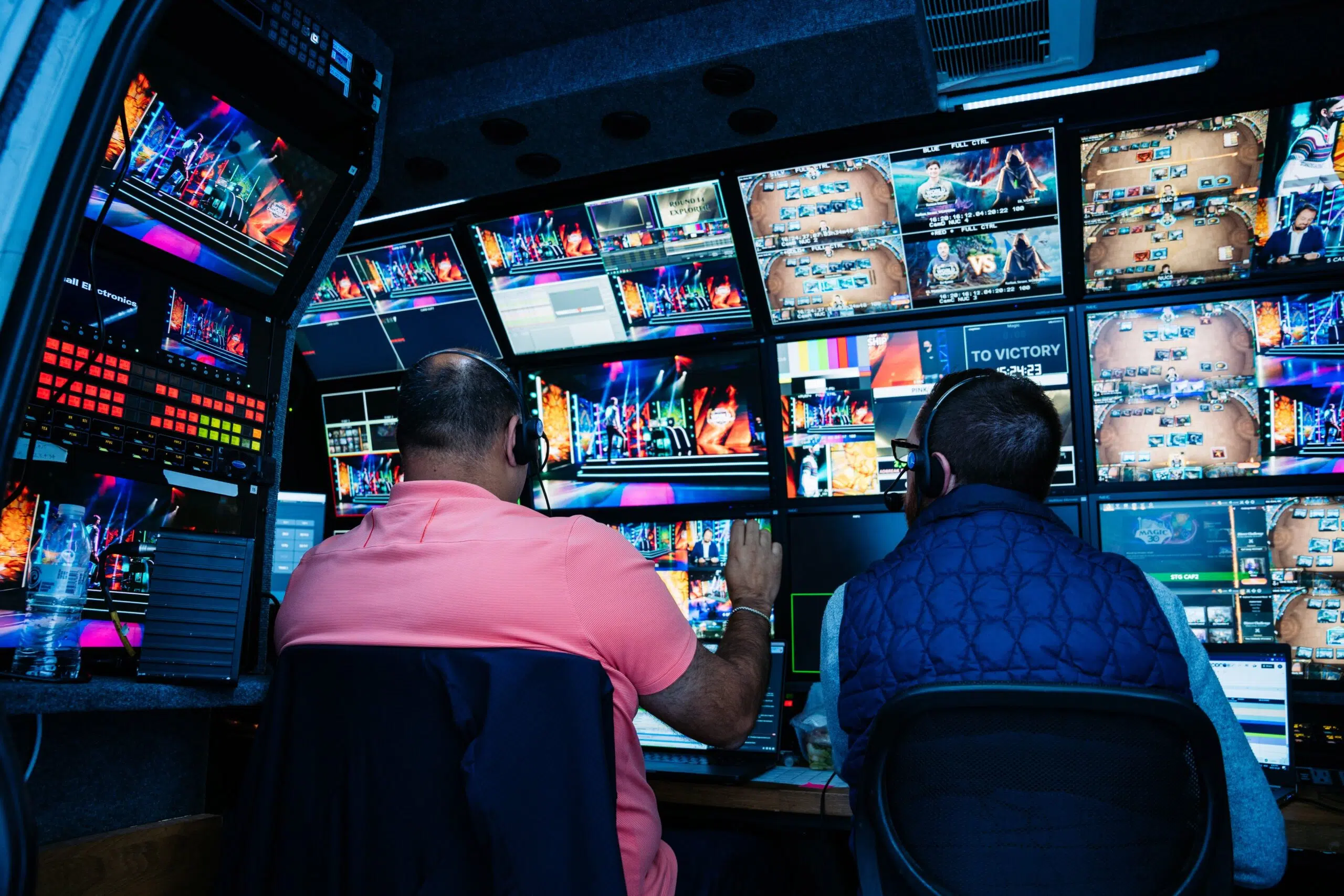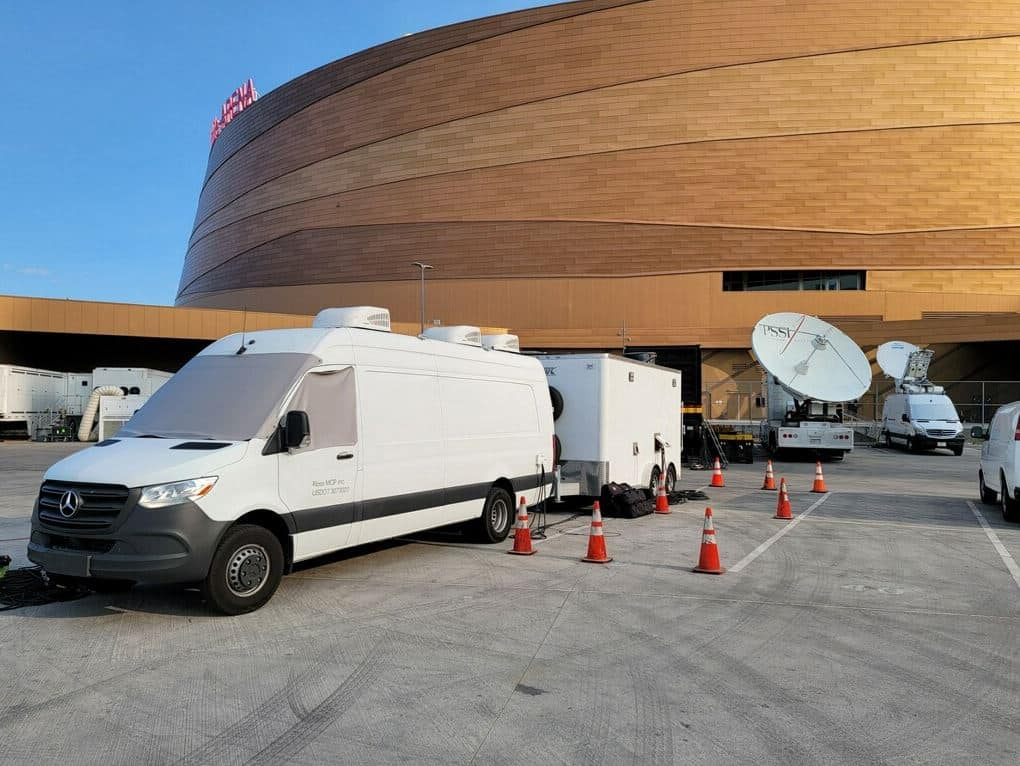December 22, 2023 - Ross Video Team, Education
5 Strategies to Reduce Outside Broadcasting Costs


The cost of running an efficient outside broadcasting team can add up quickly. Without expert advice, you may settle for expensive yet restrictive technology with prohibitive maintenance costs.
Our elite in-house production unit, Ross Production Services, works on some of the world’s most recognizable events, including Formula 1, The Olympics, and The ATP World Tour.
This article will explore their strategies to do that without breaking the bank. Here is what we will cover:
Broadcasters face a series of obstacles that challenge their ability to deliver quality mobile broadcasts without breaking the bank. You’ll need to procure expensive equipment and a skilled crew, which requires considerable capital injection. You may also need to invest in a satellite or mobile network solution to ensure reliable internet connectivity.
The cost of managing logistics and travel for your mobile crew can quickly add up. Scaling mobile coverage can prove challenging since it requires additional equipment and personnel.
Here are some general suggestions to help you manage your outside broadcasting costs better:
A needs analysis analyzes your mobile broadcasting setup to determine how well it fits your outside needs to help you invest in the best infrastructure and maximize ROI.
Creating a long-term technological investment roadmap is crucial to your outside broadcast success. Consider how the technology aligns with your business goals and ensure it can accommodate your growing needs and changing industry trends. Make sure not to overlook potential budgetary and resource limitations.
Taking a data-driven approach when assessing the health and remaining working age of OB equipment is highly rewarding. You can leverage equipment data to schedule maintenance and make informed choices regarding replacement. Data-driven insights can help you invest in the best-in-class equipment tailored to your budget and broadcasting needs.
Equipping your mobile production units with multifunctional, compact gear reduces the size and weight of your video flypacks and OB vans and helps lower your operating costs. Smaller and lighter equipment is easier and cheaper to transport, consumes less power, and has lower cooling needs. Reducing bulk and complexity means it’s easier to set up and tear down, while multifunctional equipment simplifies inventory management.
Hyperconverged infrastructure, such as Ultrix, is integrated video processing and routing that rolls multiple functionalities into a unified hardware platform. Hyperconverged equipment eliminates the need for bulky equipment while letting you easily reconfigure functionalities.
REMI workflows focus on signal acquisition and leveraging signal transport networks to offload local production tasks from the OB Van while allowing teams to share data and information remotely. This can help reduce the need to transport bulky broadcasting equipment and even downsize OB Vans.
Reducing the team size needed onsite also significantly reduces unnecessary travel expenses. Automating production processes can further help to reduce the number of manual tasks requiring onsite personnel.
When you need to scale quickly, you can use local production services that provide specialty broadcasting equipment and support. You can access their equipment, facilities, and local expertise without the hefty transportation costs.
Using a modular infrastructure and equipment when building outside broadcasting vans and video flypack systems lets you scale production without substantial upfront investment. With a modular design framework, you can start with a basic setup and gradually upgrade your system as finances allow.
Software-defined infrastructure replaces traditional hardware with software-enabled functionalities, lowering production costs by reducing hardware dependency.
Highly integrated or natively integrated technology refers to an inherently compatible technology stack. The components interact and communicate with each other without additional hardware.
Natively integrated technology outpaces non-native systems because it’s designed for compatibility. It eliminates compatibility issues to deliver a smooth and efficient production process. You can use this technology to streamline operations, improve workflows, and increase productivity.
Switching to a highly integrated infrastructure helps reduce implementation and running costs. Native integration creates a seamless technological ecosystem that optimizes resource utilization, enhances efficiency, and delivers cost savings throughout its lifecycle.
You don’t need to control the entire production or broadcast workflow to benefit from automation. You can automate as many processes as possible within your scope of influence and reduce your workload.
You can leverage enterprise control systems like DashBoard and Ross Platform Manager to reduce manual work during broadcasts. These specialty tools help you consolidate and control all your production systems and equipment under a single control panel. You can build custom dashboards for specific production roles.
Other specialty tools can automate elements of your content creation and distribution processes, handling low-effort, repetitive tasks so your team can concentrate on high-value tasks. XPression is Ross Video’s industry-leading graphics solution that automates the process of creating dynamic visuals and inserting them in live broadcasts.
Unexpected downtime can prove costly, leading to lost productivity and broadcasting mishaps that could damage your reputation.
Adding a comprehensive preventive maintenance and repair plan to your roadmap for technology investment prevents unexpected repair costs and downtime — leverage equipment data to determine the best options based on lifespan and maintenance costs wherever possible. And partner with reliable vendors who offer maintenance contracts and extended warranties to minimize downtime when issues occur.

One of the most significant challenges for outside broadcasters is maintaining the same high-quality production standards viewers are accustomed to when filming with a mobile unit. Ross …

Give your clients exceptional broadcast coverage and quality by minimizing Outside Broadcasting (OB) van failure and disruptions. Mobile broadcasting equipment — like any technology — needs proper …
We’ll put you in touch with a member of our team to discuss your specific needs.